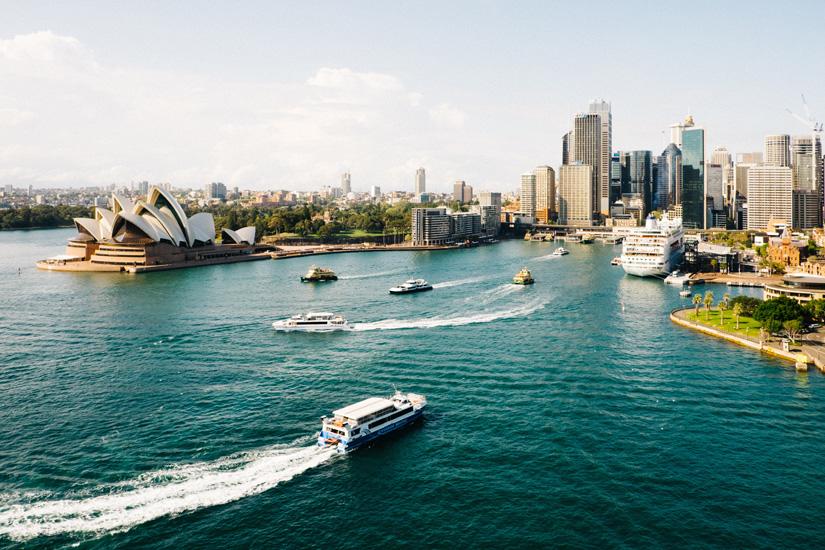
Photo credit: Dan Freeman
Sydney is a city famed for its dynamic landscape; from its sandstone cliffs and thick bushland to its working harbour and golden beaches.
So how have these landforms shaped the lives of Sydneysiders?
That’s exactly what researchers from UTS and Hong Kong Polytechnic University (PolyU) are investigating in a new collaborative research project.
Melissa Cate Christ, a Research Assistant Professor in environment and interior design at PolyU and Andrew Toland, a lecturer in landscape architecture at UTS, are investigating the ways landforms shape human habitation, and how we in turn alter geography to suit our needs.
“We started off by looking at what we’re calling ‘moments of topographic intensity’,” says Cate Christ. “Areas where there’s been, for example, an infrastructural intervention that negotiates an area of topographical difference.”
The pair draw on the example of the long sandstone wall tracing Hickson Road behind Barangaroo.
“The wall is closely related to the experiences of people during the Great Depression. That area was known as the Hungry Mile, where people would come to try and claim the limited amount of work available at the time,” says Toland.
“The High Street stairs that negotiate that wall act as evidence of those various layers of history. There’s a physical manifestation, which can tell those stories,” says Cate Christ.
The pair aren’t just interested in areas of high architectural design, but also places that tell stories of the everyday.
“They’re not spaces that are spectacular and shiny and new. They’re the material evidence of a cultural history,” says Toland. “By looking at them, really closely, you can understand this history. That makes us better designers; you can begin to tell a story around these spaces that might not otherwise get told.”
Toland and Cate Christ hope their research can offer new solutions to designers tackling environmental challenges and socio-cultural considerations. In particular, they’re interested in the ways architecture can deal with climate change.
“We both believe that everyone in research should be incorporating some way to address, mitigate or adapt to climate change,” says Cate Christ.
As cities like Sydney and Hong Kong grow denser, their research also provides a better understanding of how public spaces are used and how they can be used more effectively.
“The challenge for Hong Kong is how to improve the quality and accessibility of these spaces and to learn from other models of development, maintenance and use, such as Sydney’s public open spaces,” say Cate Christ and Toland.
Having worked together previously, the pair knew the UTS Key Technology Partnerships Visiting Fellow program was an occasion to reconnect on a deeper level and share their research interests.
“For PolyU, this collaboration with UTS is a chance to broaden our international engagement and our impact. Rather than being solely focused on what’s happening in Hong Kong, this allows for outreach,” says Cate Christ.
The two collaborators especially value the chance to work together in person.
“What these visits allow is the chance to go for a walk and explore the cities we’re studying,” says Cate Christ.
“It’s an opportunity for more extended and intensive brainstorming at a certain level, which is really crucial when you’re initiating a project,” says Toland.

